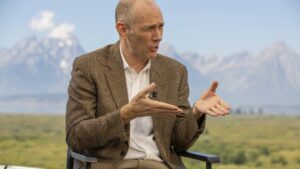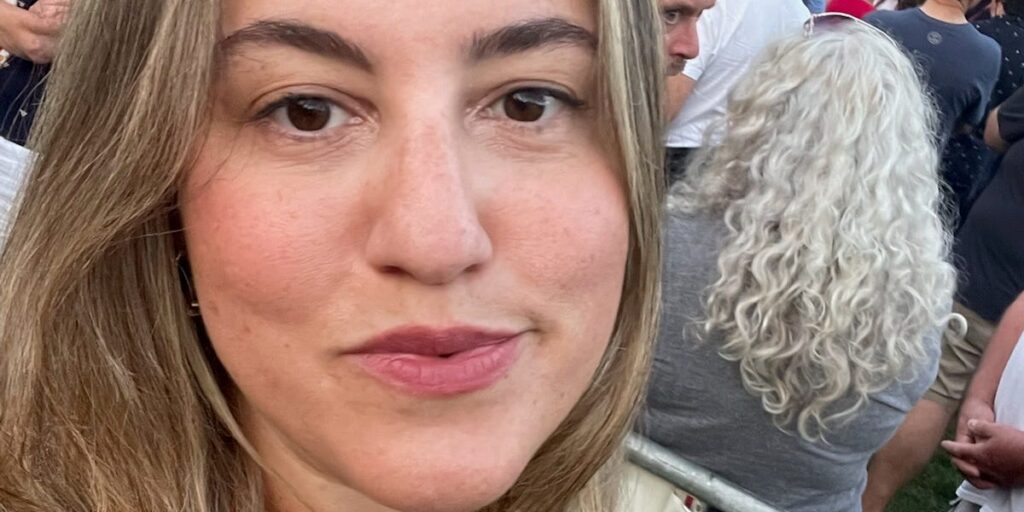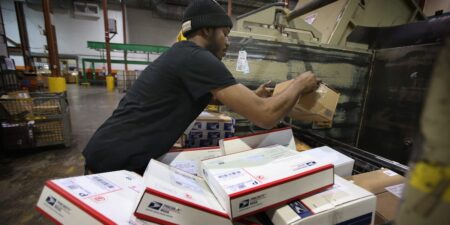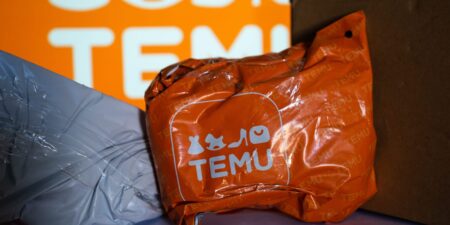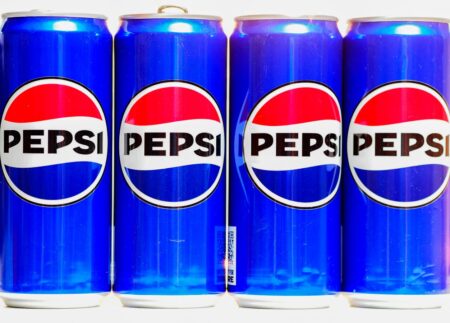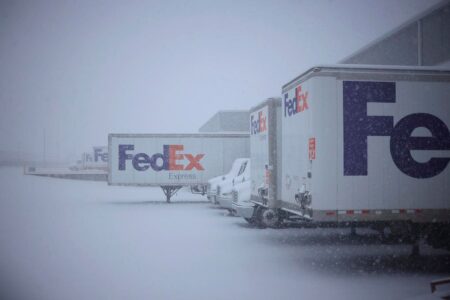- Independent journalist Marisa Kabas recently broke a major White House scoop.
- Kabas publishes her own newsletter, called The Handbasket, on Beehive.
- She broke down how she built and is growing her newsletter business, which has 17,500 subscribers.
Everything changed for Marisa Kabas on January 27.
The Brooklyn-based independent journalist broke a major White House story through her newsletter The Handbasket. She published the scoop on a memo from the White House Office of Management and Budget that ordered federal agencies to pause some federal grants and loans. The order was later rescinded, but not before sending shock waves through the government.
Kabas shared the scoop first on Bluesky, a text-based platform and competitor to X. Some news outlets later picked up the story, increasing the visibility of her publication.
The Handbasket now has about 17,500 total subscribers, including around 1,900 paid subscribers, Kabas told Business Insider.
Kabas is a former former freelancer who wrote for outlets including MSNBC.com, Rolling Stone, and HuffPost.
She spoke with BI about how she broke the recent story and built her newsletter business. The conversation has been edited for length and clarity.
What made you want to launch your own newsletter? What was that process like?
In spring 2022, I saw the way the media industry was going.
I was a freelancer for a long time. I hit a lot of dead ends with pitching freelance stories and felt like editors didn’t necessarily understand my vision or just didn’t have the time or money to hire me to write what I wanted to write.
That was kind of the time when newsletters were becoming really popular. I thought to myself, “I might as well just start one and have it as a place where I know I can always publish whatever I want to.”
It started as a complete side project. Then I broke a bit of a big story in August 2023, about a small town newspaper that was raided by the police. My subscribers grew. And I said, “You know what, I think I could do this full time.”
2024 was my first full calendar year doing this full-time.
Was the recent White House story the biggest story for your newsletter since you started it, in terms of new subscribers and impact?
Yeah, absolutely. No contest.
What has been the outcome for you and your business?
I just generally feel more comfortable with my financial situation.
Before this, I reached a point at the end of 2024 where I was very proud of myself that I had managed to earn a living — a salary, I would say — from my newsletter. I had a number in mind and I reached that. That was the proof I needed that this could be viable and I should keep trying it for at least another year.
Little did I know what was literally around the corner.
Now I feel extremely comfortable. I would say it’s fair to call The Handbasket a success. I’m looking to hire freelancers to write for me to do some guest posts, which is really exciting.
I really hope that I’ll be able to bring on an editor at some point, too. That’s the next big thing.
How do you fund your work?
Almost entirely through paid subscriptions — monthly and annual subscriptions.
Every now and then, someone will send me a one-off donation through Venmo or Ko-fi. I went on a big reporting trip to Kansas last summer. That was a follow-up to the newspaper raid story I broke. I was going for the one-year anniversary, so I put out a one-time ask my readers to send money to help me cover the cost of the trip. They really came through in a big way for that.
You originally hosted the newsletter on Substack and left last year for Beehive. Why did you make that transition?
My newsletter is hosted on Beehive. I made a very public exit from Substack last year.
I had some ideological differences with the cofounders of Substack. A story was published in November 2023, by Jonathan Katz in the Atlantic, about how Substack was monetizing explicitly Nazi content. That obviously concerns me just as a human being, but also as a Jewish woman and the granddaughter of a Holocaust survivor.
So, I decided that it would be really good to get the cofounders on record about how they felt about this. I had one very simple question: Are you OK with Nazis?
I put together a group of 250 other Substack publishers. We drafted a letter called “Substackers Against Nazis.” We ended up getting a response.
(Substack said in January 2024 that it had removed some publications that violated its content rules, which prohibit content that incites violence based on protected classes, NBC News and other outlets reported. Prior to that, in December 2023, cofounder Hamish McKenzie wrote as part of a response to the letter: “I just want to make it clear that we don’t like Nazis either — we wish no one held those views. But some people do hold those and other extreme views. Given that, we don’t think that censorship (including through demonetizing publications) makes the problem go away—in fact, it makes it worse.”)
What drew you to the platform Beehive?
Honestly, Beehive just seemed the most straightforward from a technical sense. I’m a writer, not a coder or developer.
One of the great things about Substack was that it was incredibly easy to use, so I was trying to find another place that could create that experience. On Beehive, you pay a monthly hosting fee, and then you keep 100% of your subscription revenue.
(Substack’s model is a little different. Creators keep 90% of the revenue earned and Substack takes 10%.)
What have you learned from working for yourself?
I learned that even though you work entirely alone, as an independent journalist, it still takes a village.
I’ve leaned so much on other journalist friends who have edited long pieces for me in exchange for coffee or brunch, or who took a look at something that I needed a gut check on for free. I have my group chat of journalist friends who serve as my de facto pitching room. They help me work through ideas that I’m not sure about.
I also think there are ebbs and flows, and I learned not to freak out when things are slow. There could be a big story around the corner.
What’s been your favorite part about working for yourself?
Probably the most important thing is that I’ve been able to work entirely at my own pace.
When I first started a newsletter, I talked to people who were already having some success and asked for advice. They gave me great advice that worked for them. But it wasn’t necessarily right for me. I did feel pressure to fit into some sort of mold of how often I should be publishing, and, do I need to become known for certain topics?
I just kept following my nose. I wrote about things that I felt like I had something to say about, and somehow, that led me to this moment.
Do you post your stories or talk about news on other platforms like TikTok or YouTube?
No, just my newsletter. I’ll share stories through text platforms like Bluesky and X. I am text-based all the way. With writing, you can take your time to really say what you want to say.
How do you market your newsletter?
I would say Bluesky. From the very beginning, the community there was so supportive and enthusiastic and positive.
When I need to hit a subscriber goal or when I really want to make sure that people are hearing a certain point from one of my pieces, I just hammer it on Bluesky.
Have you found any sort of work-life balance?
It’s been a lot more challenging the last week.
Last night, I broke a thing on Bluesky at 1:30 in the morning. I went to sleep around 3 a.m. and then was up at 8 a.m., working straight through to 2:30 p.m., with a bunch of different things coming through. This is not my typical pace.
In the weeks ahead, I’m going to have to figure out how to strike more of a balance because people are now expecting a lot from me. Also, the nature of my work has changed. I wasn’t really working on breaking news. I was doing more news essays or reported features. It wasn’t on this demand for timeliness. But overall, even though today was crazy, I made sure I took a lunch break. I ate something. I watched a TV show that had nothing to do with any of this. That was a good reset. The hustle culture, and like the grind, is so glorified, and that is so not what I’m about.
Like I said, I’ve been able to get to where I am completely at my own pace. I’m definitely going to try to stay true to that.
Read the full article here




